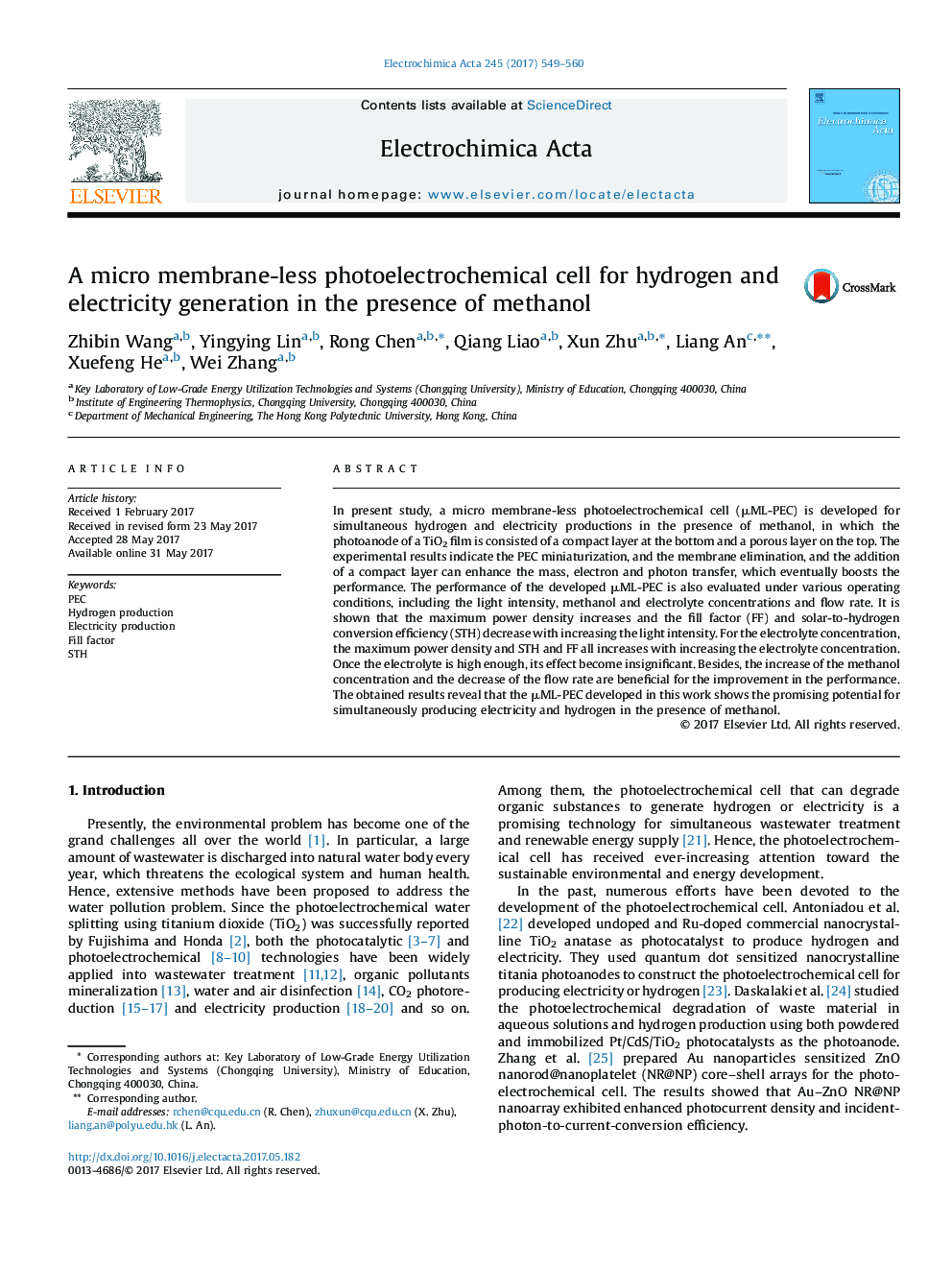| Article ID | Journal | Published Year | Pages | File Type |
|---|---|---|---|---|
| 6470802 | Electrochimica Acta | 2017 | 12 Pages |
In present study, a micro membrane-less photoelectrochemical cell (μML-PEC) is developed for simultaneous hydrogen and electricity productions in the presence of methanol, in which the photoanode of a TiO2 film is consisted of a compact layer at the bottom and a porous layer on the top. The experimental results indicate the PEC miniaturization, and the membrane elimination, and the addition of a compact layer can enhance the mass, electron and photon transfer, which eventually boosts the performance. The performance of the developed μML-PEC is also evaluated under various operating conditions, including the light intensity, methanol and electrolyte concentrations and flow rate. It is shown that the maximum power density increases and the fill factor (FF) and solar-to-hydrogen conversion efficiency (STH) decrease with increasing the light intensity. For the electrolyte concentration, the maximum power density and STH and FF all increases with increasing the electrolyte concentration. Once the electrolyte is high enough, its effect become insignificant. Besides, the increase of the methanol concentration and the decrease of the flow rate are beneficial for the improvement in the performance. The obtained results reveal that the μML-PEC developed in this work shows the promising potential for simultaneously producing electricity and hydrogen in the presence of methanol.
